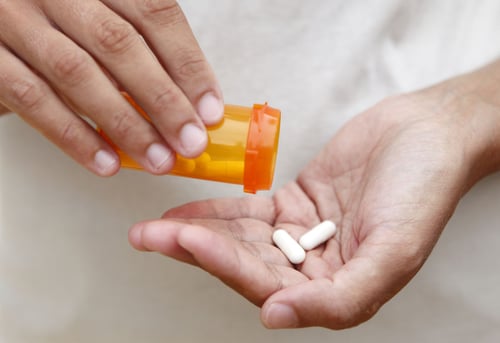New Oral Drug Leads to Better A1C and Weight Loss
By April Hopcroft
 New data on the medication orforglipron – which is in development but not yet approved – shows encouraging results for both A1C and weight loss. Based on these findings, orforglipron outperforms Trulicity and holds promise as another oral option for type 2 diabetes.
New data on the medication orforglipron – which is in development but not yet approved – shows encouraging results for both A1C and weight loss. Based on these findings, orforglipron outperforms Trulicity and holds promise as another oral option for type 2 diabetes.
At the recent European Association for the Study of Diabetes (EASD) conference in Hamburg, researchers presented data on a potential addition to the GLP-1 receptor agonist drug class (which includes Rybelsus and Trulicity).
GLP-1s and incretin-based therapies continue to see tremendous innovation. The latest data presented at EASD 2023 highlighted the potential of a new oral GLP-1 medication, orforglipron, to improve A1C and reduce body weight in people with type 2 diabetes.
Dr. Kieran Mather, a professor at the Indiana University School of Medicine, presented results from a 26-week trial that compared five doses of orforglipron (3 mg, 12 mg, 24 mg, 36 mg, and 45 mg) with Trulicity (dulaglutide) and a placebo. At the start of the trial, participants were around 59 years old with an average A1C of 8.1%, BMI of 35, and had lived with type 2 diabetes for roughly seven years.
What were the key findings?
After 26 weeks, orforglipron led to promising reductions in A1C and body weight including:
-
A1C fell by about 2% in participants on higher doses of orforglipron (all doses except 3 mg). Meanwhile, Trulicity and 3 mg of orforglipron led to A1C reductions of around 1%.
-
Participants on higher doses of orforglipron lost up to 22 pounds. Weight loss did not appear to plateau by the end of the study, suggesting that orforglipron may lead to even more weight loss over a longer period of time.
The vast majority of participants on orforglipron achieved an A1C of less than 7%. Approximately 90% of participants on orforglipron (24 mg, 36 mg, and 45 mg) were able to lower their A1C to below 7%. Roughly 80% of participants on the same doses achieved an A1C of 6.5% or less.
In addition, about one-third of those on the 36 and 45 mg doses reached an A1C of 5.7% or below, indicating that orforglipron shows potential to normalize blood sugar in people with type 2 diabetes.
About 80% of participants on higher doses of orforglipron had at least 5% weight loss – the minimum amount needed to achieve improvements in health. Meanwhile, nearly half of those on higher doses achieved at least 10% weight loss, and about one-quarter experienced at least 15% weight loss.
What about safety and tolerability?
As with other GLP-1 medications, the most commonly reported adverse effects of orforglipron were gastrointestinal (nausea and vomiting). These adverse events tended to be mild to moderate in severity.
Mather said that side effects usually occurred early in the trial and when the doses were increased. Most adverse reactions resolved in about 4-8 weeks. Looking ahead, Mather said he expects better tolerability with a different dosing schedule.
There was no severe hypoglycemia reported, and clinically significant hypoglycemia was low across the treatment groups.
What do the results mean for people with type 2 diabetes?
These findings show that orforglipron has the potential to become another oral option for managing type 2 diabetes. Currently, Rybelsus (semaglutide) is the only oral GLP-1 approved for type 2 diabetes. Several other oral GLP-1s are in development:
-
Novo Nordisk’s OASIS 1 trial results of oral semaglutide (at a higher dose of 50 mg for obesity, as opposed to oral semaglutide for diabetes at 7 or 14 mg) showed A1C reductions of up to 2.2% in type 2 diabetes. Oral semaglutide at that dose also led to remarkable weight loss of over 17% in people with obesity.
-
Pfizer’s danuglipron led to dose-dependent reductions in A1C of up to 1.2% and weight loss of up to 9 pounds in those with type 2 diabetes.
A huge benefit of oral GLP-1s like orforglipron is their potential to eliminate the need for injections. As a result, people with diabetes may be better able to achieve their treatment and health goals.
Learn more about GLP-1 receptor agonists for diabetes here:







